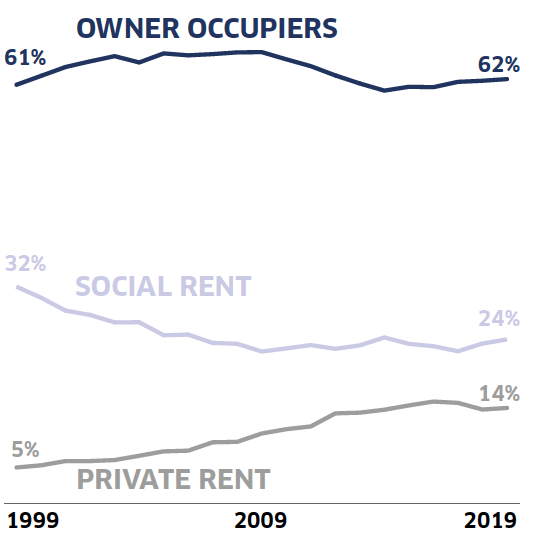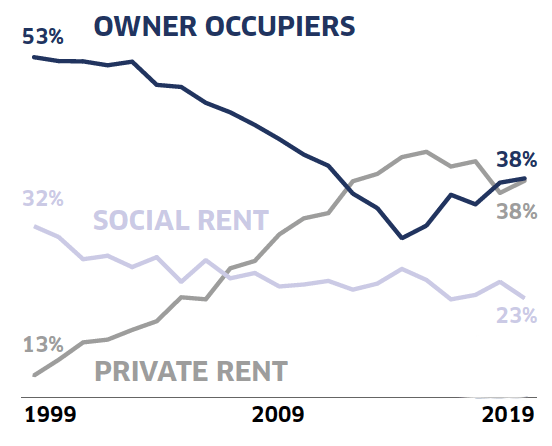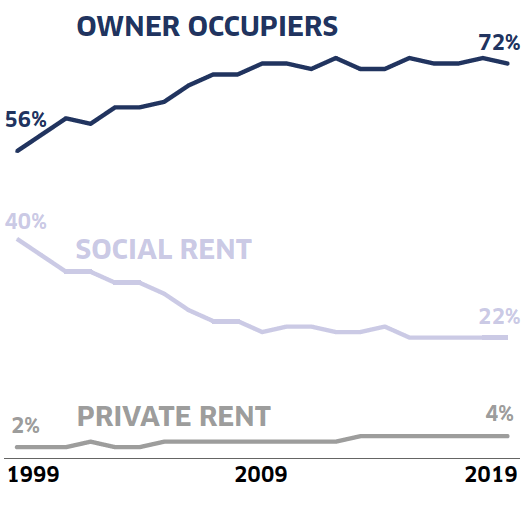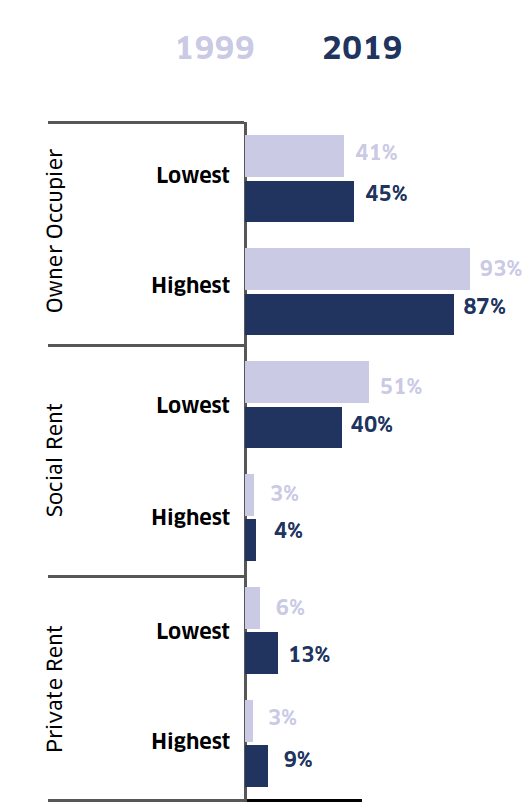Scottish Household Survey 2019: twenty years of Scotland's people - summary report
This publication synthesises 20 years of change (1999-2019) in Scottish society as measured by Scottish Household Survey data.
This document is part of a collection
Common Types of Tenure are Shifting
Large shifts in household tenure have occurred since 1999, but home ownership remained the most common form of tenure in Scotland.
The proportion of owner-occupier increased from 61% in 1999 to 66% in 2009, after which it dropped to 62% in 2019.
The proportion of households in social renting declined significantly from 32% in 1999 to 22% in 2009. In 2019 it had stabilised at 24% of all households.
The proportion of households in the private rented sector had increased since 1999, from 5% to 15% of all households in 2016, after which it fell slightly to 14% in 2019.

Households renting socially in urban areas decreased from 34% in 1999 to 25% in 2019 The equivalent change in rural areas was from 19% to 15%
Tenure Among Younger Households

The proportion of young households (where the highest earner was aged 16 to 34) in the private rented sector has increased substantially, from 13% in 1999 to 38% in 2019.
The proportion of these household that rent socially has decreased from 32% in 1999 to 23% in 2019.
For this age group, the proportion of households that owned their house decreased from 53% in 1999 to 38% in 2019. However, there was a slight increase between 2016 and 2019.
Making up a significant part of owner-occupiers, the proportion of young households that bought their home with the help of a loan or mortgage decreased from 48% in 1999 to 35% in 2019.
In households where the highest earner is aged 16 to 24, the proportion in the private rented sector has increased from 30% in 1999 to 56% in 2019
Tenure Among Older Households
In older households, where the highest earner is aged 60 or over, the proportion of households renting socially declined from 39% in 1999 to 22% in 2019.
At the same time, there was a substantial increase in the proportion of owner occupiers among older households, from 56% in 1999 to 72% in 2019.
The proportion of older households that bought their home with the help of a loan or mortgage dropped from 10% to 6%.

Making up a big proportion of owner-occupiers, older households who owned their home outright rose from 46% in 1999 to 66% in 2019
Tenure Trends Differed by Income Group

Tenure trends differed depending on the income level of the household, but in both the lowest and highest income group more households now live in the private rented sector.
In 1999, 41% of households in the lowest income group were owner occupiers, and this increased to 45% in 2019. In the highest income group the proportion of owner-occupier households decreased from 93% to 87%.
The proportion of households in the lowest income group renting privately increased from 6% in 1999 to 13% in 2019. In the highest income group, this number increased from 3% in 1999 to 9% in 2019.
The proportion of single parent households renting socially decreased from 69% in 1999 to 51% in 2019.
There was a significant decrease in the proportion of social renters in the lowest income group, from 51% in 1999 to 40% in 2019
Contact
Email: shs@gov.scot
There is a problem
Thanks for your feedback